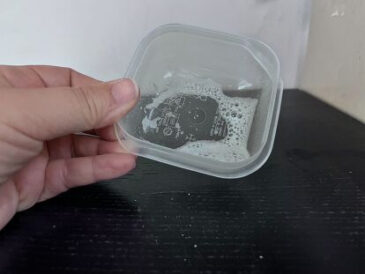Seeing the flashing lights in your rearview mirror is always a little cause for anxiety for me. If you’ve ever been pulled over, you know what I mean. Your stomach drops and your brain races with a million thoughts. Suddenly, every mile of your driving history is compiled before you. The truth is, the procedure during a traffic stop is more than checking the speed or a broken tail light. The process is built on protocol layers of safety, years of training, and a lot of calculated thought by the officer.
So let’s break down the steps of what happens during a traffic stop. Let’s examine why the officers do the things they do. If you’ve ever asked yourself, “Why did the cop touch my car?” or “Why do they shine that blinding light into my soul?” you’ll want to read on.
Before the Stop: How Officers Prepare
Long before the officer puts the lights on, this process is well underway. First, the officer usually runs the license plate. It’s a quick scan that can tell them a lot of things. For instance, whether the car is stolen, if the registration is expired, or if the owner has outstanding warrants.
Second, a call goes out over the radio and the officer informs dispatch what is going on: vehicle description, location, and how many occupants, if any, can be seen. This is not only done for the purpose of making a log. However, if things get messy, that log becomes critical.
Choosing the spot to stop the vehicle is tactical as well. Officers generally look for well-lit, low-traffic areas where it is easy to pull over. So if they signal you and it takes a minute before you pull over completely, remember this. It is generally because they are looking for a location that is not going to become a hazard in their stop.

The Placement of the Vehicle
Once you pull over, you may notice that the patrol car does not stop directly behind you. Rather, it is somewhat offset. This is not an example of poor parking. It is deliberate.
The placement of the police car serves several purposes. First, it gives an officer some cover if they need it, and also blocks their body from traversing the flow of traffic. It even creates a funnel of space. Here, the officer can approach your car without stepping into a lane. Some even turn their wheels outward. These small details have a different significance given the high-risk nature of the transaction.
The Approach
Now we come to the part that most drivers recall most vividly: the approach. Here are where many of the little ideas occur that may seem strange until you realize they are all safety methods.
First word about lights. The instant that the officer turns on the white light or the takedown lights, or perhaps irritating as it may be, shines a spotlight into your mirror, this is a startling experience. It is also designed for maximum visibility. They want to see inside your car, see your hands, and lessen the shadows where danger might lurk.
On their approach, they’re looking at things like the rear trunk, hoping that a door will not pop open, assessing any back seat passengers, reading the energy of the car in general, and yes, sometimes they will touch the rear of the car. That creates a fingerprint, a breadcrumb, if you will, that connects the officer to that car in case something happens. But simply the touching gesture is an immediate sense of physical connection and to see if the car suddenly moves. Sometimes they come in on the passenger side, not for any reason of trouble to you that is indicated. However, sometimes that presents a better angle for checking you out and puts the officer farther away from traffic. It’s all very situational.
During the Conversation
Once the officer arrives at your window, a conversation begins. It may be a conversation that feels tense but is not necessarily because of you. You may be asked to turn off your engine and place your keys on the dash. This is not a show of force but a routine means of ensuring that the vehicle cannot suddenly be driven away. You will be asked in almost every case for your license, registration, and proof of insurance. However, this is where it will be interesting.

You will notice that often they will repeat your name or they will ask you a question or two times that is similar. This is because their training is to verify information through cross-checking your answers. It’s not as if they think you are lying necessarily. However, inconsistencies can raise flags. If there are passengers aboard, do not be surprised if the officer speaks to them separately. They may constantly look their way. This is not suspicion. This is situational awareness.
Officer and Driver Safety
This aspect of the traffic stop procedure is designed for the safety of all concerned. Let’s be honest: in the vast majority of traffic stops, everything goes fine. The officers in question have no right to expect that this will be the case, however, since they have been trained to consider each unpredictable.
Their body language, where they put their hands, how they stand just behind your door instead of alongside you — it is all strictly by design. They are minimizing exposure and maximizing control, just in case. You have a large part to play in this also. From my own experience (and, believe me, I have experienced some entertaining stops), the best remedy is to relax, keep your hands in sight, and avoid sudden movements. Wait until they ask you for your papers before you reach for them yourself. If you are rummaging through your glove compartment while the officer is still walking up, you may cause some unnecessary tension.
Common Misconceptions
continue reading in page 2





